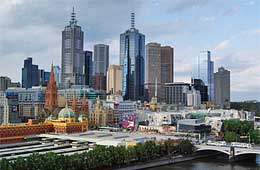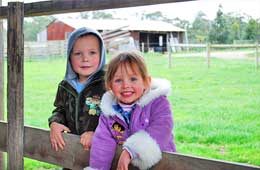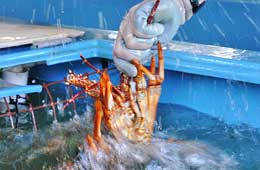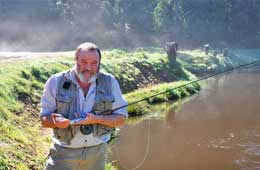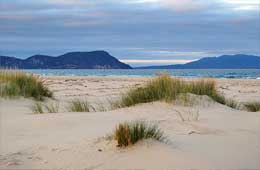The Age
Small rural schools in West Gippsland are thriving in a well-resourced cooperative system and claim to now offer an alternative model of state primary education.
Small schools once served rural communities but as farms became larger, the communities became smaller and many of the schools were closed. However, with an extensive history of rural community support, the schools that have remained open in West Gippsland are well resourced with wonderful amenities, attractive buildings and grounds and serene rural outlooks. Many are situated alongside shared community resources funded by local government and the community, including community halls and some excellent sporting facilities.
These small schools that were once individual entities now operate within a school cluster sharing resources, activities and teaching staff. The principals of these small schools believe with their new technology, improved programs and professionalism, the schools have a future providing a state education alternative particularly for students who for whatever reason aren’t thriving in a larger school environment.
Within close proximity to Drouin, a fast developing West Gippsland town with a population of 9000 are three large state primary schools with more than 200 students. On the outskirts of the town amongst farm land are two clusters of the small rural schools. The Invermay cluster is Athlone Primary with four students, Ripplebrook 16, Lardner and District 46 and Longwarry 113. The Tarago cluster is Noojee Primary with 18 students, Jindivick 41, Labertouche 17, Neerim District Rural 7, Neerim South 150, Neerim District Secondary College 142 and Mary Beck Preschool with 30.
The smallest of the two clusters is Athlone Primary School with four students in prep, grade two, four and six. While it currently has a precarious future, the school’s principal Michelle Turner, is optimistic about the school’s survival saying in the last two years the school has undergone a transformation. It now offers an attractive alternative learning environment that she hopes will attract some of the many families who seem to be making the tree change into the area from Melbourne.
“Whether the school remains open is still a school council decision,” Ms Turner said. The Athlone School Council is made up of four parents, a community member, the school’s principal and business manager. “Obviously if the number of students attending continues to stay low the school will close but I’m confident the numbers will increase by the end of the year.
“Small rural schools have changed. There is a misconception that they are little backwater schools but they are very dynamic and are now an alternative education model.”
She said Athlone Primary has increased education standards, new technology and new programs shared with other schools in the Invermay and Tarago clusters. This includes a Stephanie Alexander cooking and gardening program, Asia studies and Mandarin language. The school has wetlands on the site that is visited by other schools. The school is also a member of the local Landcare group and is working towards a five-star sustainability rating.
A Mandarin speaking language teacher based at Lardner and District Primary, facilitates language practices in the cluster schools one day a week. Athlone students spend one day a week at Lardner and District Primary for Asia studies, library, winter sports and music tuition with a choice of keyboard, violin or recorder. “Neerim District Rural Primary comes here every second Wednesday for Stephanie Alexander cooking and gardening and we have a sustainability day here hosting workshops with Lardner and District Primary School.”
She said small schools within the cluster are able to offer a personalised cross-aged learning program, and working as part of a larger learning community is good for transition so students know each other before moving on to secondary college.
Lardner and District Primary School is the amalgamation of Hallora, Tatura Road and Warragul West primary schools. It is part of the Invermay cluster and the larger Tarago cluster of schools. School principal Anne Southall said there are many networks that involve the small school system. “We have 14 in what is called the West Gippsland Principals when all the West Gippsland primary school principals meet once or twice a term to discuss their own issues. We also do professional development training with the school cluster alternating fortnightly with English and maths so our staff have high professional interaction and graduate teachers are supported by expert teachers so there is not the isolation that can happen in small schools.
“With the appointment of staff from diverse backgrounds and learning coaches in small schools the bar has really been raised. I think it’s a very exciting time in education.”
Ms Southall said students with autism and disabilities are over represented in small schools, which is largely due to recommendations by some health professionals. She said small schools are becoming an ideal place for children that fit outside the box. “We employ a language support teacher because we have a high number of students with language intervention needs and other problems that are usually a result of curriculum that doesn’t match the students.
“I think there is a misconception that this costs a lot of money but the school has a very low budget. Everything we have acquired has been through a tremendously supportive parent body that raises funds to get what we need. While we are well resourced now, it’s been a lot of hard work and generosity. I think small schools attract parents that want to be more involved and we wouldn’t survive without it.”
Judy Ingamells is principal of Drouin South Primary School, a large school closer to the town with 222 students.
Ms Ingamells said the large school offers diversity, a large range of teaching staff and a wide social group for students and teachers.
The school also offers a before and after school program. “Many parents choose the school because that is available,” Ms Ingamells said. “We are obliged to take children from small schools as well but transporting children from one school to another is not something many parents do.”
She said being a larger school means they receive a larger portion of the funding because they have more students. The programs they offer are similar to what is offered in small schools. They also have lunchtime activities and active after school activities.
She said they mainly have composite grades with students working at all levels but they are children of a similar age. For children with learning difficulties or special needs they can match the aids to a child’s need because they have several aids to choose from, and having a non-teaching principal and an assistant principal allows them to focus on those children as well. She said the leadership role in a large school is quite different to the role in small schools.
“There are advantages to having everyone on the one site and as the school has grown we have been able to spread the jobs more equitably.”
While Ms Ingermells believes large schools are great schools she also believes there is a definite advantage to having alternative small schools. “It gives parents a choice. We have about 25 to 30 children from the rural area and the rest come from Drouin so people are making choices. We all work as part of a network, so there is cooperation between the schools that has been built up over time but it takes a lot of trust between principals to ensure that can happen in a seamless way.
“Parents need to be comfortable with where their children are placed and I think it’s really important for parents to have that choice.”
By Wendy Morriss
Copyright © 2013 Wendy Morriss: Freelance Journalist. All Rights Reserved
